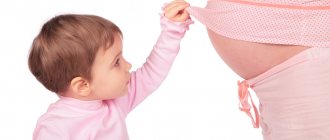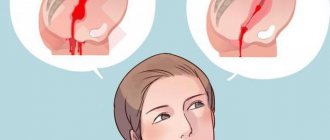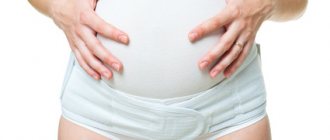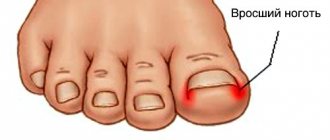Pregnancy term calculator
For many women, the feeling of an upcoming or already begun pregnancy occurs before the test shows two lines - that is, even before the actual delay. Scientists cannot yet give an explanation for these true premonitions, but the concept of Early Pregnancy Factor has already been introduced into the scientific lexicon, which describes the chemical reactions of the mother’s body in response to the accomplished conception after just a few hours. Currently, there are already tests for identifying the Early Factor hormone in the female body, but due to their significantly high cost, these tests are not produced on an industrial scale.
On average, the baby's birthday occurs 10 obstetric months (280 days) after pregnancy, when the baby is ripe for birth. However, it should be noted that 280 days is the conditional number of days of bearing a child. All women's bodies are different, and all babies mature differently in their mother's tummy. Some will need 280 days, while others will be “already ready” in 240 days. Only 2% of newborns are born on a precisely calculated day. Most children are two weeks earlier, or several days later than the appointed time. The duration of pregnancy and childbirth is calculated based on the date of the start of the last menstruation.
If we take into account all the changes that occur with the baby almost every day during pregnancy, and especially the first trimester, then in general these processes in importance and complexity, in depth, can be compared with the birth of a new universe. Every day of the little baby inside you is not just a step, it is a huge leap, a breakthrough forward. The birth of a new life, despite the scale of achievements, does not require any external efforts... everything happens under the cover of secrecy. After all, the woman herself learns that conception has occurred only after some time. Thanks to modern technology, scientists have been able to study a little of the great mystery of birth - where EVERYTHING begins. Enter your data and flip through the pages of the calendar of human life development throughout pregnancy. Believe me, amazing discoveries await you!
How to determine due date by menstruation
In a simple formula for calculating the date of birth, the main component is the gestational age. Conception occurs most often on the days of ovulation, but not every woman knows when these very days occur.
Everything is simple - exactly in the middle of the menstrual cycle, i.e. 12-16 days after the first day of the last menstruation.
For example, your last period began on April 1, which means that the egg will begin its difficult journey on April 12-16.
This calculation of the due date is suitable for women with a menstrual cycle of average length - 24-28 days. If the days deviate in one direction or another, the date of ovulation also changes.
Let us assume that conception occurred in the middle of the last menstrual cycle. From this period of time the long 40 weeks of your pregnancy begin.
Determining the time of birth
Why do you need to know the exact date?
Not all women are attentive to their pregnancy and calculate the period by week. They think that calculating the gestational age is the doctor’s task in order to subsequently calculate the due date. During pregnancy, they do not think about how many weeks they are now and how the baby should develop.
In vain, since no one can determine better than the mother herself whether the baby is comfortable inside. Dangers await a pregnant woman at every step, and it is better if she knows her due date week by week. A calculator and calendar can help with this, so you don’t have to contact your doctor every time.
If you don't know how many weeks you are pregnant, open the calculator on the website, enter the required data, and you will get the answer. It will help you remember your doctor’s recommendations and protect yourself and your baby from possible complications. Isn’t it nice to see in photos and videos how your baby grows week by week? After all, you can only look inside with the help of an ultrasound, but this only happens three times during the entire pregnancy.
The need to undergo screenings is another reason why a woman needs to know the exact date of pregnancy. Studies, including blood tests for genetics and ultrasound, are carried out within a strictly defined time frame. If you do the analysis earlier or later, you may get an inaccurate answer.
Do not neglect calculating the gestational age by week. This will give the woman valuable material to determine whether the baby is developing according to the norm, whether there are any deviations, and what studies still need to be done.
Online pregnancy calendar by week
For those wishing to make a pregnancy calculation, you must indicate on the calendar provided the date of the first day of your last menstruation . After this, the calculator will calculate the date of conception and birth.
- Start of menstruation
The first day of your period that you specified. - 1
The first 7 days can be characterized by pain, since it is associated with the beginning of the monthly cycle. It is still impossible to predict whether pregnancy will occur or not, since fertilization of the egg has not yet occurred. - 2
There are still no special signs of a special situation; there is only a slight heaviness in the lower abdomen. It is too early to talk about the fetus, since it exists only in the form of an egg placed in a follicle. - Conception
Day of conception. Obstetricians and gynecologists are inclined to believe that conception occurs in the 2nd week of pregnancy. - 3
The woman begins to notice the first signs of her situation: excessive fatigue, drowsiness, frequent urge to urinate, high sensitivity to odors. - 4
The first health difficulties begin. The following symptoms appear: breast swelling, increased sensitivity, touching causes pain, mood changes sharply, and it is difficult to control oneself. - 5
The respiratory and cardiovascular systems develop, muscle mass and internal organs grow. The embryo increases in size, which is why the emotional state can change dramatically, severe headaches, nausea appear, drowsiness increases, strength is lost, and you constantly want to go to the toilet. - 6
Usually during this period everyone learns about their situation. The baby’s nervous system is strengthened, tightened with tissue, and the brain is located at the end of the tube. The child's eyes are developing, but they are still fragile and small. The heart begins to function. - 7
The baby is acquiring facial features; you can see small eyes, a nose and a mouth if you undergo an ultrasound scan. The gastrointestinal tract actively develops, the large and small intestines appear. The brain grows and develops, an umbilical cord is formed, which is connected to the wall of the uterus. - 8
The nervous system and brain were finally formed. The fetus begins to make its first movements. - 9
The height of the fetus reaches 23-30 mm, and its weight is 2 grams. The embryo has almost straightened up, and very soon its tail will disappear. - 10
The embryonic stage of development ends. Starting next week, he will be considered a fetus, not an embryo. The woman’s feelings do not change, her poor health remains, because the hormones are still growing. - 11
The baby's weight is already 7-8 grams, and the length from the tailbone to the crown is 5 centimeters. Now the fetus will grow faster, despite the fact that its development and organs are still growing. - 12
The genitals have already formed, so an ultrasound can show who has “settled” with you - a girl or a boy. - 13
The woman has ended the “discomfortable” stage: her emotional background has improved, smells and food have ceased to irritate her, tearfulness is no longer observed, but another problem arises - difficulties with assimilation of food. Nowadays I often suffer from constipation, as the uterus is getting larger and larger, and the hormonal levels are significantly changed. - 14
The fetus is active, makes many different movements, and may frown and clench its fists. Now the child’s height reaches 90 mm, and his weight is 35 grams. - 15
The formation of the cerebral cortex has begun, which will continue over the next month. - 16
The expectant mother feels great: she has a lot of strength, energy, she is calm and peaceful, and she is no longer bothered by sudden mood swings. A good appetite awakens. - 17
Now the child’s CTE is, as a rule, 13 cm, and his weight reaches 140 grams. The fruit is already quite large, and its size reaches an open palm. - 18
The uterus is continuously growing and becoming even taller. The expectant mother begins to experience discomfort while sleeping and tries to find a comfortable position in which she would be comfortable. You can buy a special pillow, sleep on your back, and relax before bed. - 19
Every slightest movement is felt. He moves very often, which brings a lot of discomfort. The expectant mother's body weight increases, and her hips become wider. Changes occur in the gait, as the stomach pulls down and posture is disturbed. - 20
The baby goes about its business in the placenta: sucking its thumb, spinning, doing somersaults, sometimes yawning and tugging at the umbilical cord. The protective skin layer continues to grow and four layers of skin are formed. - 21
Now the height is determined from the crown to the heels, and it is approximately 26.5 cm. The weight of the fetus is about 360 grams. - 22
During this period, anemia often appears - low levels of iron in the blood. This causes a lot of inconvenience, so it is advisable to visit a doctor. Pain in the legs, back and lower back may also occur. - 23
The digestive system has already completely formed and its work has been established: the stomach, esophagus, pancreas, small and large intestines. The fetus makes rhythmic breathing movements, swallowing amniotic fluid. - 24
The child's body weight reaches 550 grams. Now it is difficult for him to move freely, since he occupies most of the uterus. In panic, he hits his hands on everything he sees. Now he is as close as possible to the outside world and listens to all surrounding sounds, and also notices changes in the situation. - 25
A woman’s condition can deteriorate sharply: severe pressure appears in the diaphragm, heartburn, pain in the ribs. This is explained by the increased weight of the baby, which reaches 700 grams, as well as the height of a soccer ball. - 26
Now the body weight of the fetus is approximately 850 grams, so the mother feels its movements more and more. The woman suffers from pain in her back and ribs. To somehow smooth them out, you can buy a mattress for pregnant women. Consult a specialist before purchasing it. - 27
The brain and nervous system are rapidly developing. The small pituitary gland produces the hormone sonatropin, which promotes the rapid growth of future offspring. - 28
The child finally opened his eyes. Now he has them blue, but over time they will turn green or brown before giving birth. Hair on the head grows faster, eyelashes become expressive. - 29
Enamel appears on the teeth, but they are still hidden by the gums. The fetal immunity improves several times due to the production of leukocytes. Its body weight is about 1250 grams. - 30
Now the child already weighs 1400 grams, so it is very difficult for the expectant mother to move normally. There is strong pressure in the back muscles, they sink lower and lower, and severe pain occurs in the lower back. - 31
May cause severe pain in the lumbar region. Due to the relaxation of muscle tissue, blood vessels dilate, so it is likely that varicose veins may appear at this time. Since there is already quite a lot of amniotic fluid, and the weight of the future offspring is impressive - almost 1600 grams, the woman gains about 8 kilograms of body weight. - 32
He has finally become comfortable in his tummy and is listening to the work of his mother’s internal organs. He listens to her voice, and after birth he immediately recognizes his mother upon first contact. Wrinkles are already smoothing out, hair continues to grow. The functioning of the nervous system is improved, the child is not afraid of bright light. - 33
The child sleeps a lot, so discomfort from his spontaneous movements no longer bothers him. The baby’s brain has neural connections, he studies the environment, is interested in what is happening in the outside world. The weight of the fruit reaches 2000 grams. - 34
All vital functions of the body were activated: stomach function, heartbeat, breathing, musculoskeletal system. Contractions may appear, and their frequency increases, and the stomach stretches a little. As a rule, this is associated with spasms in the upper area of the uterus. The weight of the fetus is approximately 2250 grams. - 35
The urge to urinate becomes more frequent, making it difficult to sleep peacefully. It is necessary to choose a comfortable sleeping position, since the spine is always tense and severe pain may occur. - 36
Bone tissue is strengthened, and the baby is ready for childbirth. Its weight is 2700 grams. The expectant mother feels his every movement, especially in the chest area. - 37
Breathing is normal, food is digested well, but the urge to urinate is still frequent. This is explained by the fact that the fetal head descends into the pelvic area. Due to the rapid accumulation of adipose tissue, his body weight also increases - it reaches 3 kg. - 38
The original lubricant disappears along with the protective fuzz. The baby's large intestine is filled with dead cells that will be passed out as feces after birth. - 39
At this stage, the baby has changed his position - he pressed his knees to his chin and is ready to be born. Now he is completely immobilized, and his weight continues to grow. All organs are already functioning like an ordinary person, but he is still very weak. - 40
Contractions are often felt and pass quickly. Each spasm causes many vivid emotions, because there is fear that labor is about to begin. As a rule, many people give birth earlier than planned, for example, at 39 or 40 weeks. - 41
The hair on the head continues to grow, so if the birth occurs during this period, the baby will have very long strands. Most women worry that something is wrong, because the fetus hardly moves. However, this is quite natural, since the surrounding space does not allow him to make free movements. - 42
The placenta becomes outdated and is no longer able to fully cope with its main function - the delivery of oxygen and nutrients. This causes oxygen starvation for the child. But don't worry - there's still time. - 43
This period implies a post-term pregnancy. As a rule, the woman is admitted to a hospital and labor stimulation begins. - Childbirth
Probable day of birth (PDD)










